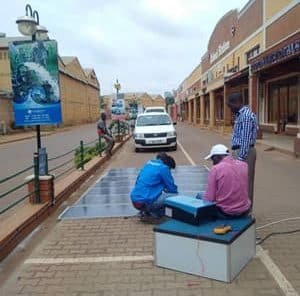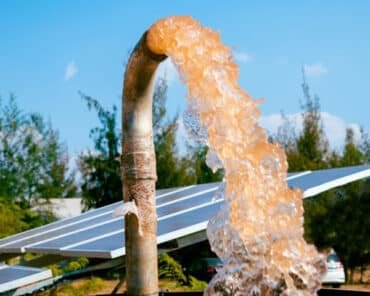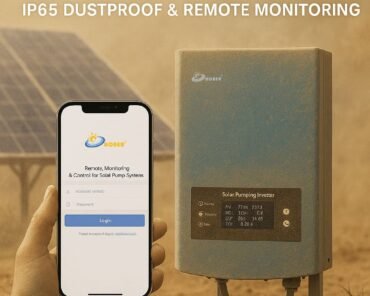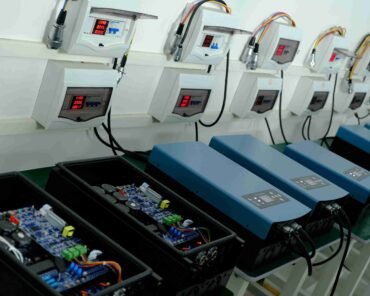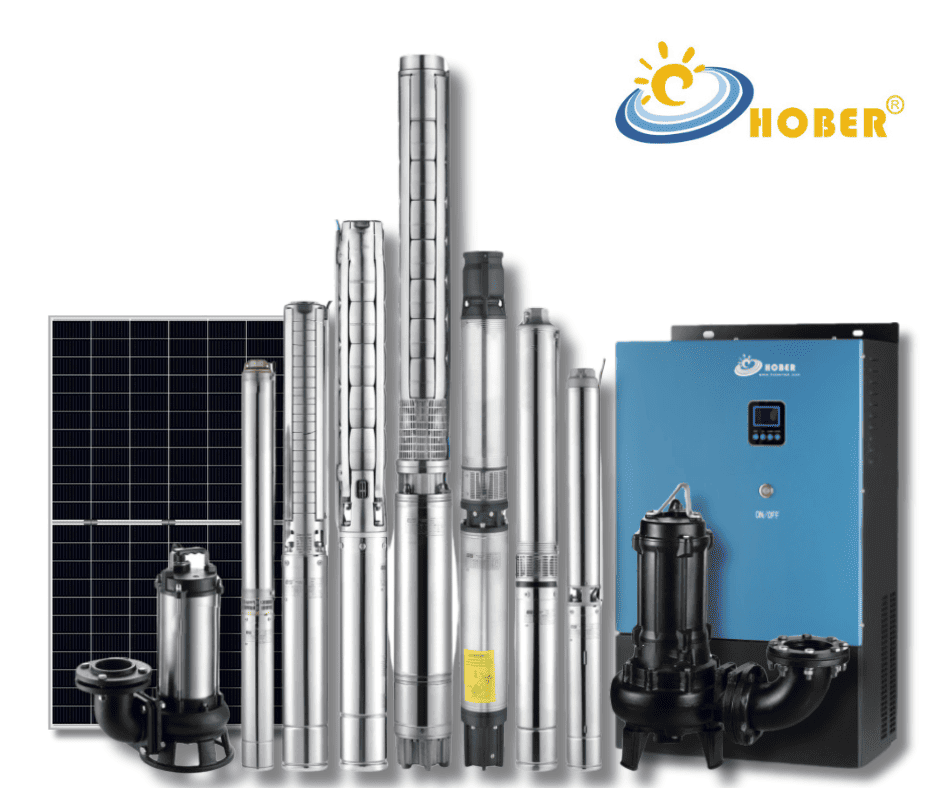Introduction
With the growing demand for renewable energy in rural Kenya, solar water pump systems are becoming an increasingly viable solution to the region’s water challenges. The solar pump inverter plays a crucial role in this system, converting direct current (DC) generated by solar panels into alternating current (AC) to power the water pump effectively.
In areas with limited grid access, solar-powered water pumps provide a sustainable, cost-effective, and eco-friendly solution. However, to ensure these systems function properly, it’s essential that they are installed by qualified technicians. This guide will walk you through the step-by-step process of installing a solar pump inverter in Kenya, highlighting the key technical considerations and best practices.

Understanding the Solar Pump Inverter
A solar pump inverter is the heart of a solar water pumping system, responsible for converting the DC electricity generated by the solar panels into AC electricity, which powers the pump. The inverter not only manages the voltage and frequency but also adjusts power output based on the water pump’s load requirements.
The essential components of a solar water pumping system include:
- Solar Panels: Capture sunlight and convert it into DC power.
- Solar Pump Inverter: Converts DC power to AC power for the water pump.
- Water Pump: Pumps water from the ground or a water source to the desired location.
- Cabling and Control Devices: Connect and regulate the flow of electricity within the system.
The efficiency of the system largely depends on the proper installation and functioning of the inverter.
Preparations Before Installation
Before installing a solar pump inverter, certain preparations are crucial to ensure a successful installation.
Qualification of Technicians
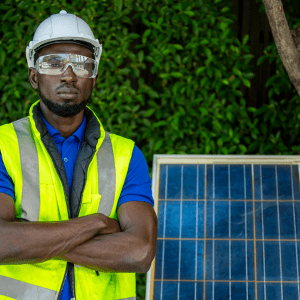
Only qualified and trained electrical technicians should handle the installation of solar pump inverters. The system involves high voltage electricity, and incorrect installation can lead to damage or even injury. 【Reference: Solar Pump Inverter Installation Manual, Part 1】
Required Equipment and Tools
Ensure you have the following equipment and tools ready:
- Solar Pump Inverter
- Solar Panels
- Water Pump
- DC and AC breakers
- Grounding Equipment
- Electrical Cables
- Voltage and Current Meters for testing during installation.
Site Planning and Requirements
The installation site should provide ample ventilation to ensure the system doesn’t overheat. Both the inverter and the panels should be placed away from obstructions that could block sunlight. In Kenya, especially in windy areas, it’s important to build a solid foundation to avoid structural issues. It’s recommended to create a small structure or “room” to house the inverter, measuring at least 3x3x3 meters with adequate ventilation【Reference: 30KH System Construction Precautions】.
Solar Panel Installation Steps

Solar panels are the main source of power for the system, so their correct installation is critical for overall efficiency.
Choosing the Installation Location
Solar panels should be installed in an area that receives maximum sunlight and is free from shade. Avoid placing the panels near trees or buildings that could cast shadows during the day【Reference: Solar Pump Installation Manual】.
Installing the Mounting Structure
The panel brackets should be made from steel or aluminum alloy to withstand strong winds of over 10 on the Beaufort scale. Additionally, all metal components should be treated to prevent rust, especially in regions with high humidity or saltwater exposure【Reference: Solar Pump Inverter Installation Manual】.
Connecting the Solar Panels
When connecting solar panels in series, ensure that each group has the same number of panels. After connecting, use a voltmeter to measure the voltage of each group and compare the results to check for inconsistencies【Reference: Solar Pump Installation Manual】.
Installing the Solar Pump Inverter
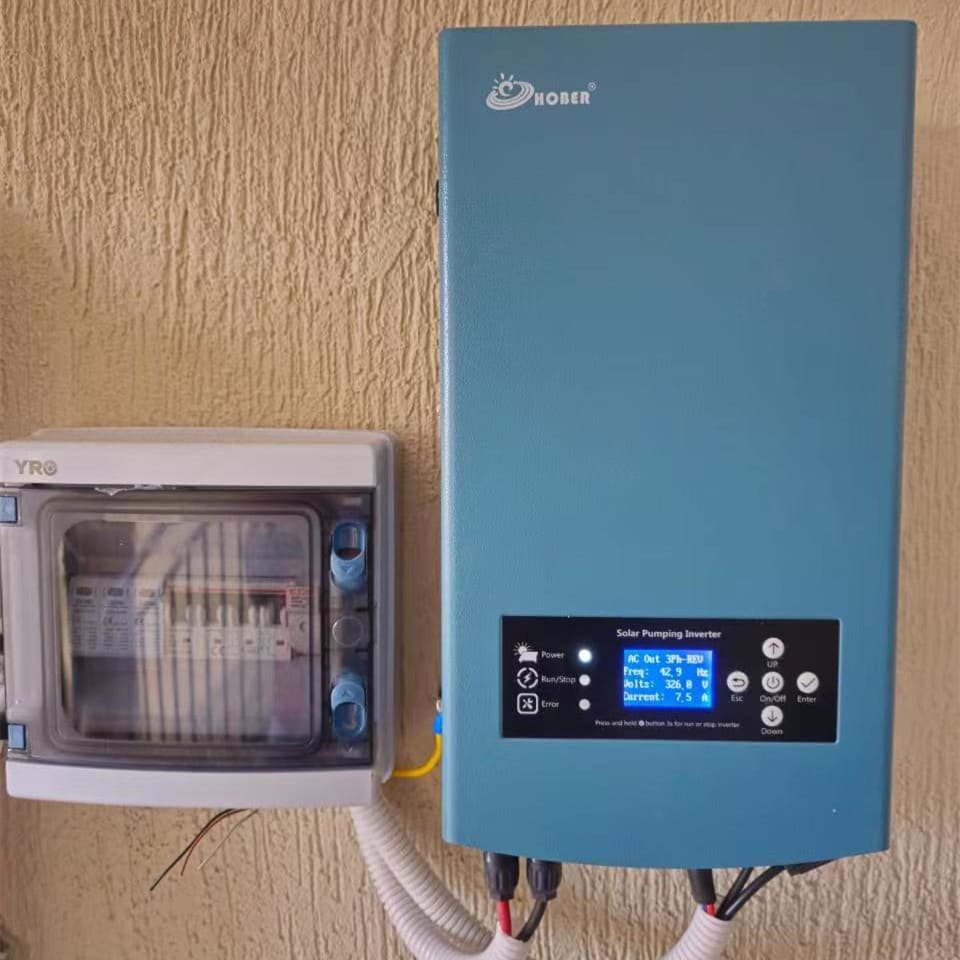
The solar pump inverter plays a critical role in ensuring the smooth conversion of DC to AC power. Here’s how to install it properly.
Positioning the Inverter
The inverter should be installed in a well-ventilated area, avoiding direct sunlight. Keep at least 0.3 meters of space at the top and bottom of the inverter to ensure adequate ventilation. If multiple inverters are used, install them side by side rather than stacking them to prevent overheating【Reference: Solar Pump Inverter Installation Manual】.
Wiring the Inverter
The inverter’s DC input should be connected to a DC breaker, and the AC output should be connected to an AC breaker. Ensure the wiring is properly secured, with no polarity reversals. If the distance between the inverter and the water pump exceeds 100 meters, use a reactor to prevent voltage drops and increase the cable thickness【Reference: Solar Pump Installation Manual】.
Installing the Water Pump

Proper installation of the water pump is essential for the system to function effectively.
Positioning the Pump
For submersible pumps, ensure that the pump is at least 1 meter below the dynamic water level and no more than 5 meters above the bottom of the well【Reference: Solar Pump Installation Manual】.
Connecting the Pipes and Check Valve
The check valve must be installed at the bottom of the inlet pipe to prevent debris from entering the pump. In Kenya’s rivers and wells, sediment buildup can clog the pump, so it’s important to position the valve above the riverbed【Reference: 30KH System Construction Precautions】.
Electrical System Connections
Connecting the system’s electrical components correctly is crucial to avoid malfunctions.
Solar Panels to Inverter
The solar array should be connected to the input terminals of the combiner box. During connection, measure the DC voltage and ensure the correct polarity is maintained【Reference: Solar Pump Inverter Installation Manual】.
Inverter to Water Pump
The AC output from the inverter should be connected to the water pump through an AC breaker. If the pump’s cable length exceeds 100 meters, install a reactor to prevent voltage loss and thicken the output cable【Reference: Solar Pump Inverter Installation Manual】.
System Testing and Commissioning
Once the installation is complete, thorough testing is necessary to ensure the system operates smoothly.
Pre-Commissioning Check
Before starting the system, check the solar panel voltage and verify that all cable connections are secure. Any loose connections can cause power loss or equipment failure【Reference: Solar Pump Installation Manual】.
Running the System
During initial startup, the inverter will operate at a minimum frequency of 30Hz to ensure stable water flow. Set the detection time to 20 seconds and the sleep time to 10 minutes. This allows the system to adjust automatically to fluctuations in load and solar power availability【Reference: Solar Pump Installation Manual】.
Maintenance and Safety Guidelines

Regular maintenance ensures the longevity and efficiency of the solar water pump system.
Regular Inspections
In regions like Kenya where lightning storms are common, regularly inspect surge protectors in the combiner box to ensure they are functioning correctly【Reference: Solar Pump Installation Manual】. Additionally, check cables for wear and tear periodically to prevent breakdowns.
Inverter and Pump Maintenance
Both the inverter and water pump require routine checks for any signs of overheating, wear, or corrosion. Regular servicing of the pump and electrical connections will prevent unnecessary downtime and extend the system’s life【Reference: Solar Pump Inverter Installation Manual】.

Conclusion
Installing a solar pump system in Kenya is a cost-effective, sustainable solution to the country’s water challenges. However, it requires a well-executed installation by skilled professionals to ensure efficiency and safety. By following the detailed steps outlined in this guide, technicians can install and maintain solar pump inverters successfully, providing reliable water supply to rural communities.

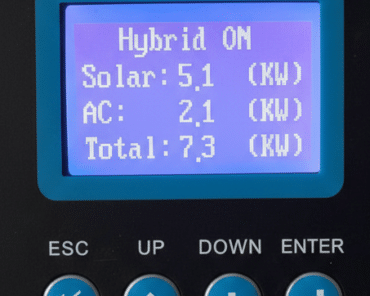
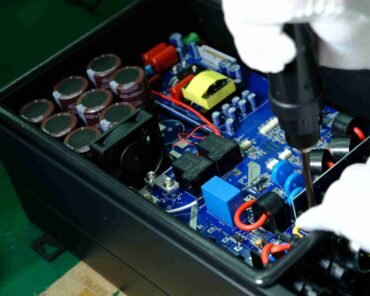
](https://hobertek.com/wp-content/uploads/2025/03/solar-pump-inverter-for-irrigation-efficient-water-pumping-solution-370x296.png)
